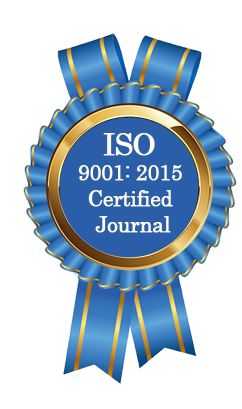| All | Since 2020 | |
| Citation | 105 | 60 |
| h-index | 4 | 4 |
| i10-index | 3 | 2 |
WJAHR Citation 
Login
News & Updation
Best Article Awards
World Journal of Advance Healthcare Research (WJAHR) is giving Best Article Award in every Issue for Best Article and Issue Certificate of Appreciation to the Authors to promote research activity of scholar.
Best Article of current issue
Download Article : Click here
Indexing
Abstract
ESTROGEN RECEPTOR AND BCL-2 EXPRESSION IN POSTMENOPAUSAL ENDOMETRIAL POLYPS: INSIGHTS INTO HORMONAL AND APOPTOTIC PATHWAYS
Noor Shamil Mohammed Salih*, Nadwa S. Alazzo
ABSTRACT
Background: Endometrial polyps (EPs) represent one of the most frequent uterine abnormalities observed in postmenopausal women, and they are often linked to episodes of irregular or abnormal uterine bleeding. and, occasionally, premalignant or malignant transformation. Hormonal imbalance and apoptotic dysregulation have been implicated, but the molecular mechanisms underlying polyp persistence remain unclear, particularly the interplay between estrogen receptor (ER) signaling and the anti-apoptotic marker Bcl-2. Objective: To evaluate ER expression in postmenopausal EPs, explore its association with Bcl-2, and assess correlations with age and specimen type. Methods: A retrospective–prospective case series was conducted on 50 postmenopausal women (aged 50–75 years) with histologically confirmed EPs collected from Al-Khansaa Teaching Hospital and private laboratories in Mosul, Iraq (October 2021–October 2022). Paraffin-embedded blocks were stained with Hematoxylin–Eosin and immunohistochemistry for ER and Bcl-2. Staining intensity was semi-quantitatively scored in glandular epithelial nuclei. Data were analyzed using Chi-square, Fisher’s exact test, Spearman correlation, and logistic regression (SPSS v.25). Results: ER expression was detected in 37 of 50 cases (74%), most frequently at score 3+ (42%), whereas 26% were negative. Bcl-2 positivity was observed in 49 cases (98%), including 92% of ER-negative polyps. No significant association was found between ER and Bcl-2 expression (p = 0.20; Spearman r = 0.21). Logistic regression showed no significant effect of age or specimen type on ER status (p > 0.05). Conclusion: Postmenopausal EPs demonstrate frequent ER positivity and diffuse Bcl-2 expression, suggesting combined mechanisms of estrogen sensitivity and apoptotic resistance. The absence of significant ER–Bcl-2 correlation indicates multifactorial pathways in polyp pathogenesis. Immunohistochemical profiling of ER and Bcl-2 may assist in risk stratification, particularly in women receiving tamoxifen therapy.
[Full Text Article] [Download Certificate]
